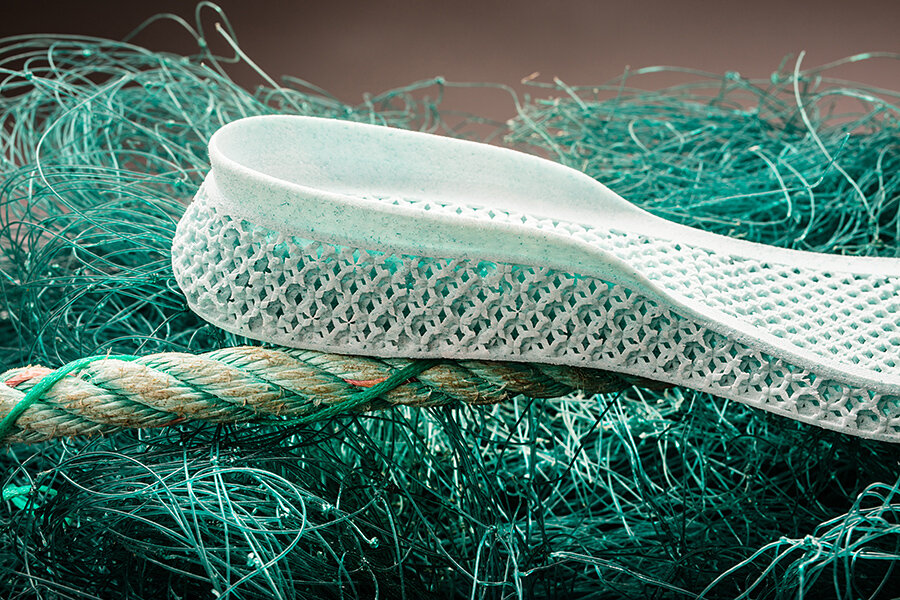Adidas 3-D prints a sneaker from recycled ocean plastic
Loading...
In the midst of the Paris climate talks, Adidas unveiled its latest step in a partnership with environmental group Parley for the Oceans: a 3-D printed sneaker made partially of plastic waste from the ocean.
The sneaker — which is still in prototype form — will have an upper half made of “ocean plastic content” and a 3-D printed midsole of recycled polyester and gillnets, wall-like nets used to trap fish, in keeping with Parley’s mission to reduce the amount of plastic clogging oceans across the world.
The 3-D printed shoe composed of recycled materials is an attempt to “set new industry standards [that] start questioning the reason of what we create,” says Eric Liedtke, an Adidas executive board member, in a statement on Wednesday.
He reflected on the significance of unveiling the shoes during the historic climate negotiations that began earlier this month in Paris.
"World leaders forging an agreement is wonderful, but we shouldn't need to be told to do the right thing," Mr. Liedtke adds. “The industry can't afford to wait for directions any longer. Together with the network of Parley for the Oceans, we have started taking action and creating new sustainable materials and innovations for athletes.”
The athletic brand’s new sneaker concept combines two earlier ideas to create a custom sneaker made of recycled materials.
Earlier this year, Adidas unveiled its Futurecraft 3D concept, which would imagine a future where a customer could walk into a store, run for a few minutes on a treadmill to analyze their running style, and then have a custom shoe 3-D printed for them while they waited.
In June, the company teamed up with Parley to create a shoe made of yarn and filaments recycled from the ocean, announcing its partnership along with officials at the United Nations.
The brand’s partnership comes in the midst of other efforts to reuse existing materials in the 3-D printing process, such as recycled potato chip bags and takeout containers, The Christian Science Monitor’s Lonnie Shekhtman reports.
New York startup 3D Brooklyn melted down potato chip bags and other waste to create the filament that it feeds into its 3-D printers, resulting in a soft ink that can be molded into new objects.
“We don't want these plastics to keep being made,” Will Haude, 3D Brooklyn’s founder, told the Monitor. But, he notes, finding a way to dispose of the plastic from discarded versions of 3D printed products is still an ongoing challenge.
“It's an interesting model for the future, but we'd like it even more if there was the option of using materials that are completely sustainable and recycled. After all, what's the point of dredging plastic waste from the ocean to make your running shoes if the process of recovering, reforming, and 3D-printing that material is, itself, environmentally damaging,” writes the Verge’s James Vincent.
For Adidas, the environmentally-conscious partnership also serves another goal — reinvigorating its brand, with a company executive describing the Adidas brand as “significantly cooler than 12 months ago” thanks to a series of partnerships and endorsements by athletes and celebrities.
The company says its efforts to introduce new materials made of recycled ocean waste are also intended as a call to action to clothing manufacturers about the materials they use.
"Protecting life underwater became the 14th development goal of the United Nations," says Cyrill Gutsch, Parley’s founder, in a statement. “With a framework of political goodwill in place, it is the right moment to transform words into action. “





